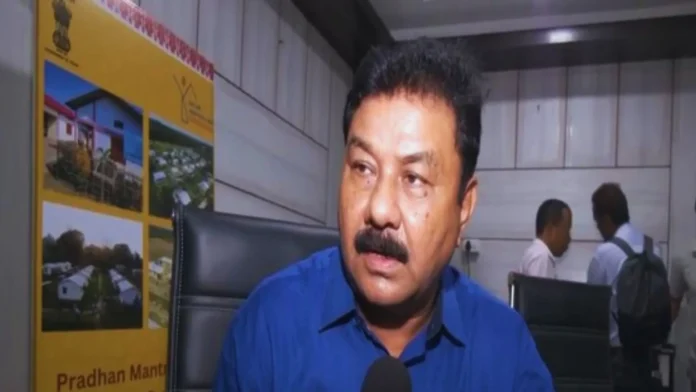The state of Assam is gearing up to launch the second phase of the Pradhan Mantri Awas Yojana (PMAY), a flagship government scheme aimed at providing affordable housing for all by 2024. The new phase, set to roll out in the coming months, promises to bring significant relief to thousands of low-income families who dream of owning a home. The government of Assam has outlined an ambitious plan to increase the pace of construction and improve the quality of housing, especially in rural areas, where housing shortages are most acute.
With the implementation of PMAY Phase Two, Assam is poised to make significant strides in addressing housing inequities while contributing to the state’s broader development goals.
Pradhan Mantri Awas Yojana: A National Mission
Launched by the Central Government in 2015, Pradhan Mantri Awas Yojana (PMAY) is an ambitious housing scheme with the goal of providing “Housing for All” by 2024. The scheme is divided into two components: PMAY-Urban and PMAY-Gramin (rural), each targeting different populations based on their locations. Under the scheme, beneficiaries receive financial assistance to either construct new houses or enhance their existing structures. The houses built under PMAY are equipped with basic amenities, such as sanitation, clean drinking water, and electricity, ensuring that recipients enjoy a decent standard of living.
In Assam, PMAY-Gramin has been the primary focus, given the state’s large rural population. Assam’s rural areas face significant challenges, including poor infrastructure, limited access to finance, and frequent natural calamities like floods, which have contributed to the housing crisis. The state government, in collaboration with the Central Government, has committed to addressing these challenges by accelerating the construction of affordable homes under PMAY.
Phase One Achievements and Challenges
In the first phase of PMAY, Assam made notable progress in building affordable housing, particularly in rural areas. According to government data, over 2 lakh houses were constructed under PMAY-Gramin in the state. The houses were built in partnership with the Central Government, which provides a subsidy to cover part of the construction cost, while the state government provides additional support in terms of land and infrastructure.
However, despite the success of the first phase, Assam also encountered several challenges. One of the primary hurdles was the state’s vulnerability to floods, which slowed down construction in many regions. Additionally, logistical difficulties in transporting materials to remote, flood-prone areas hampered progress. The COVID-19 pandemic further delayed construction timelines due to labor shortages and disruptions in the supply chain.
The state government has learned from these challenges and aims to address them more effectively in Phase Two of PMAY by incorporating better disaster preparedness and planning into the construction process.
Phase Two: What’s New?
Phase Two of PMAY is expected to bring several new elements that will enhance the scheme’s implementation and outreach. Assam’s government has identified specific goals and strategies to make this phase more impactful.
- Targeting the Homeless and Vulnerable: The second phase will focus on providing housing for Assam’s most vulnerable populations, including those who are homeless or living in makeshift shelters. The government has also emphasized targeting marginalized groups like Scheduled Castes, Scheduled Tribes, and Other Backward Classes.
- Disaster-Resilient Housing: Given Assam’s susceptibility to floods, the state government plans to introduce disaster-resilient housing designs under PMAY Phase Two. These structures will be better equipped to withstand extreme weather conditions, ensuring that families remain safe and secure even in disaster-prone areas.
- Increased Financial Assistance: The second phase is expected to offer enhanced financial support to beneficiaries, particularly in remote regions. Families in hilly and border areas, who often face higher construction costs, will receive additional assistance to help them complete their homes.
- Community Participation: The state is also planning to engage communities more actively in the decision-making process. Local self-help groups and village councils will play a larger role in identifying beneficiaries, supervising construction, and ensuring that houses are built according to the needs of the community.
- Focus on Quality: In Phase Two, Assam’s government has committed to improving the quality of construction. This includes using better building materials and ensuring that houses are equipped with essential amenities like toilets, electricity, and water supply.
Expected Impact on Assam’s Housing Crisis
The rollout of PMAY Phase Two in Assam is expected to bring substantial relief to families who have long struggled with inadequate housing. With a strong focus on rural areas, the scheme has the potential to dramatically improve the living conditions of Assam’s most vulnerable populations. By incorporating disaster-resilient designs, the government is also preparing communities to withstand future floods and other natural disasters, making the housing more sustainable in the long term.
Moreover, the expansion of affordable housing in the state will have a ripple effect on the local economy. Increased construction activity will create job opportunities, particularly for laborers and skilled workers, and the development of infrastructure like roads and utilities will spur further economic growth in rural regions.
As Assam moves forward with Phase Two of the Pradhan Mantri Awas Yojana, the state is taking a critical step toward alleviating its housing shortage and improving the lives of its rural population. With disaster-resilient housing, enhanced financial assistance, and community involvement, the scheme promises to provide a stable, secure foundation for thousands of families across the state. By addressing the challenges of the past and adapting to Assam’s unique geographic and social landscape, the government aims to make the dream of “Housing for All” a reality for its citizens.




